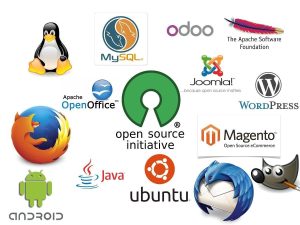
The Impact of RAM on Computer Performance
In the fast-paced world of technology, computer performance plays a crucial role in meeting the increasing demands of today’s users. One component that significantly impacts a computer’s performance is RAM (Random Access Memory). RAM serves as a temporary storage area for data that a computer’s processor can quickly access. The size and quality of RAM can determine how efficiently a computer performs and tackles tasks. Let’s delve into the impact of RAM on computer performance and the importance of choosing the right RAM for your system.
Understanding RAM
RAM, often referred to as the computer’s short-term memory, is a vital component that aids in the smooth operation of various processes. It stores data that the processor needs to access quickly, providing temporary storage to facilitate the execution of tasks. Whenever you open an application, it gets temporarily loaded into RAM to provide the processor with fast and easy access, resulting in faster response times and seamless multitasking.
RAM and Performance
When it comes to overall computer performance, RAM plays a critical role. Insufficient RAM can lead to slower response times, increased loading times, and frequent freezing or crashing of applications. This is particularly evident when working with resource-intensive software, such as video editing tools, graphic design software, or running multiple applications simultaneously.
Larger amounts of RAM allow for more data to be stored, meaning that your computer can handle a greater number of tasks and processes efficiently. Additionally, having more RAM enables smoother multitasking, as the processor can access data from different applications simultaneously without excessive delays. This prevents the system from becoming overwhelmed with too much information and struggling to maintain optimal performance.
Choosing the Right RAM
When considering upgrading or purchasing RAM, it is important to choose the right type and amount for your computer. Different factors, such as the motherboard capacity and compatibility, should be taken into account to ensure optimal performance.
There are various types of RAM available, including DDR3, DDR4, and the newer DDR5. DDR4 has become the standard for most modern systems, providing higher bandwidth and better overall performance compared to its predecessors. However, it is essential to check if your motherboard supports the chosen RAM type before making a purchase.
In addition to type, the amount of RAM is crucial. As a general rule of thumb, a minimum of 8GB is recommended for basic computer usage, such as web browsing and office tasks. For more demanding tasks like video editing or gaming, 16GB or even 32GB of RAM may be necessary. It is important to consider your specific needs and the requirements of the applications you will be running.
Moreover, the RAM frequency or speed should also be considered. Higher frequencies generally lead to improved performance, although the impact may not be as noticeable in all scenarios. It is advisable to consult the motherboard specifications to identify the supported frequencies and select RAM accordingly.
Conclusion
RAM is a critical component in determining the overall performance of your computer. Insufficient RAM can lead to sluggish performance and decreased productivity, especially when handling resource-intensive tasks. By choosing the right type, amount, and speed of RAM, you can significantly enhance your computer’s performance, enabling it to handle a wide range of tasks with ease and efficiency.
Remember, investing in sufficient RAM is an investment in the longevity and reliability of your system. So, make sure to assess your computing needs and choose RAM that meets those requirements effectively!

